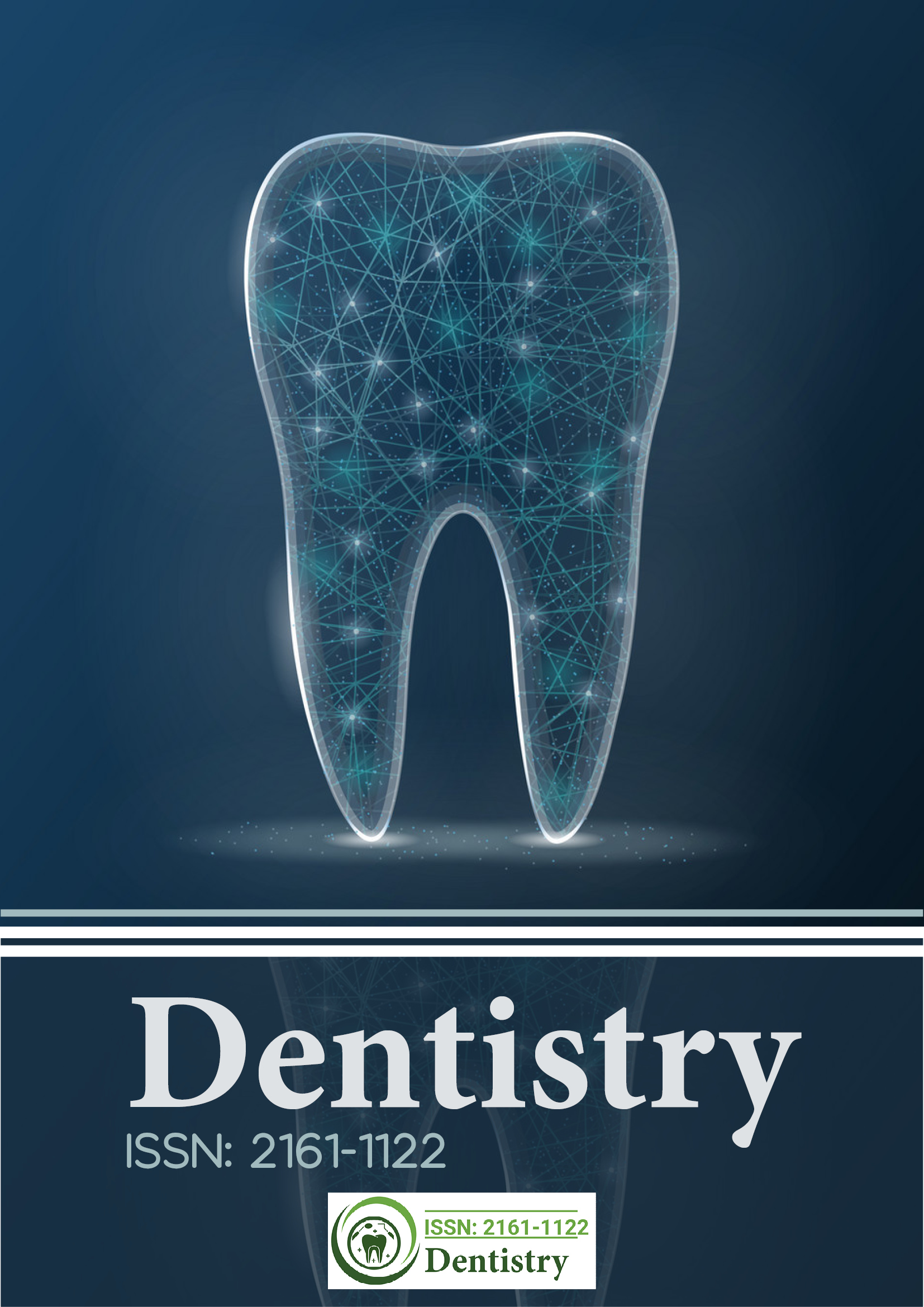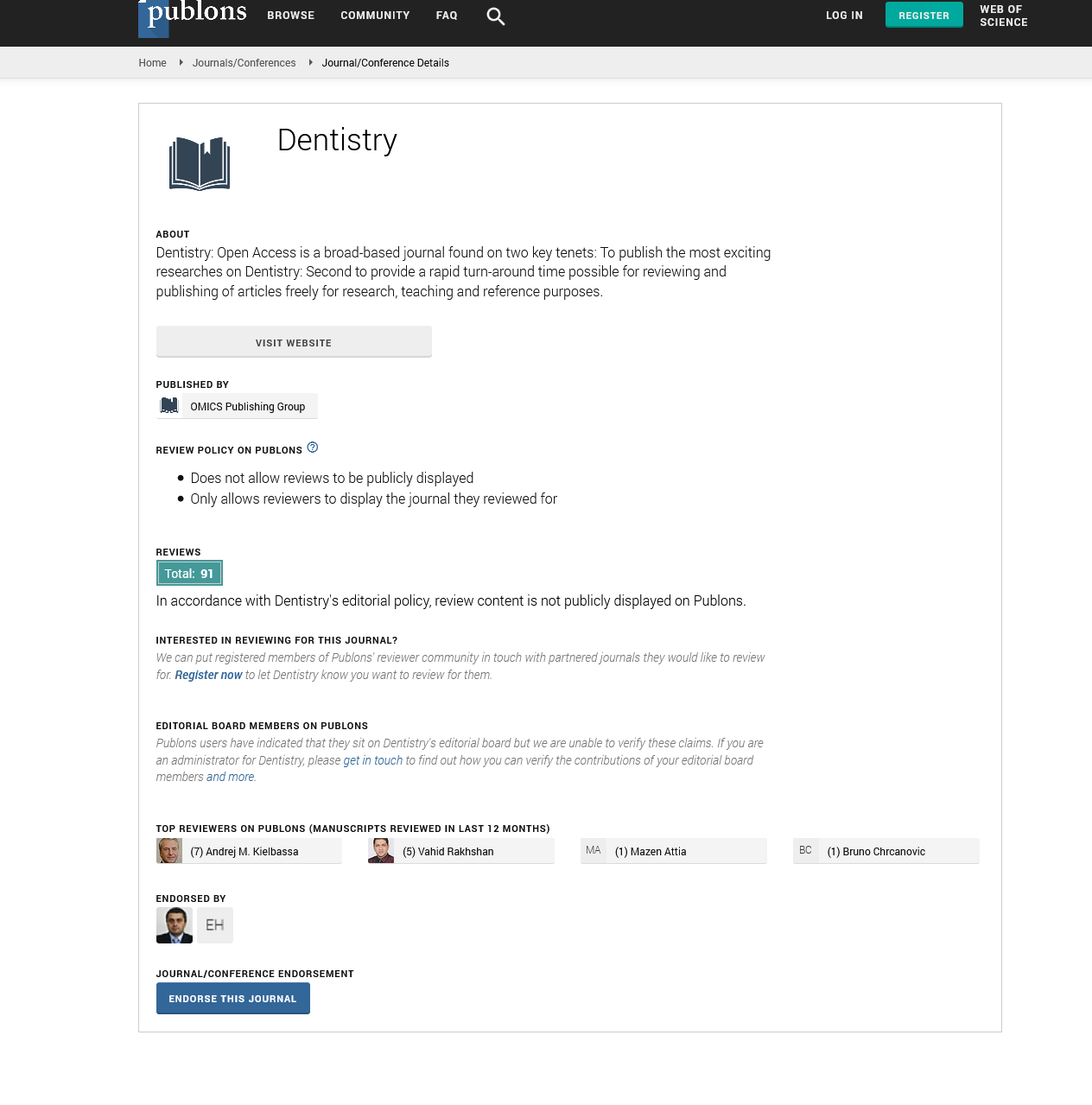Citations : 2345
Dentistry received 2345 citations as per Google Scholar report
Indexed In
- Genamics JournalSeek
- JournalTOCs
- CiteFactor
- Ulrich's Periodicals Directory
- RefSeek
- Hamdard University
- EBSCO A-Z
- Directory of Abstract Indexing for Journals
- OCLC- WorldCat
- Publons
- Geneva Foundation for Medical Education and Research
- Euro Pub
- Google Scholar
Useful Links
Share This Page
Journal Flyer

Open Access Journals
- Agri and Aquaculture
- Biochemistry
- Bioinformatics & Systems Biology
- Business & Management
- Chemistry
- Clinical Sciences
- Engineering
- Food & Nutrition
- General Science
- Genetics & Molecular Biology
- Immunology & Microbiology
- Medical Sciences
- Neuroscience & Psychology
- Nursing & Health Care
- Pharmaceutical Sciences
A study on the ability of CBCT in the detection of different sizes of projectiles caused by a car accident in the maxillofacial region
37th International Conference on Dentistry & Oral Care
March 27-28, 2019 Sydney, Australia
Hadi Hamidi Shishvan
Aja University of Medical Sciences, Iran
Posters & Accepted Abstracts: Dentistry
Abstract:
The purpose of this study was to evaluate CBCT’s sensitivity for detecting foreign bodies in different sizes and materials in three anatomically important areas of the maxillofacial region. Four different materials were used in this study including metal, glass, rubber and wood. Particles were prepared in 4 different sizes from 1*1*1 mm (length, width, height) to 4*4*2 millimeters. Foreign bodies were then placed into a sheep’s head in infratemporal, infraorbital and sublingual regions. CBCT was performed and then observed by 11 observers. CBCT clearly detected metallic and glass particles in all areas and rubber projectiles larger than 1*1*1 mm were detected in most areas. For wooden particles, there was a lot of controversy and CBCT didn’t seem to be reliable for detecting them in the infratemporal area. Larger particles were better detected in the infraorbital and sublingual area as well. CBCT can replace CT scans for detecting metallic and glass and some rubber and wood foreign bodies in the maxillofacial region and has the benefit of reducing patient’s dose of X-ray and cost less than CT. To get ideal results, it would be necessary to use ultrasonography for superficial radiolucent particles and CT scans for deeper ones.
Biography :
E-mail: hadihamidi1336@gmail.com

